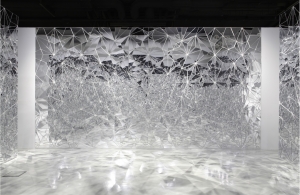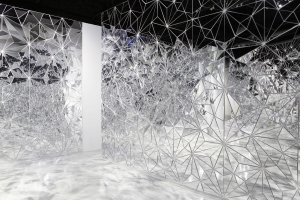Florenz-Bagdad
Florenz-Bagdad
The work was dinspired by Hans Belting’s book "Florence and Baghdad: Renaissance Art and Arab Science", which discusses the meaning of perspective in each of these cities and traces the development of the visual strategy from western art history to the intellectual and mathematic principles developed in Baghdad by Islamic scientists.The term perspective meant very different things in each culture, but they are essentially based on the same geometric concepts. They differ in the relationship to the image; this is where Nasseri intervenes and navigates his practice through this conflicting space.
The physical experience of Florenz-Bagdad combines these different visual approaches and adds the complications of the significance of mirrors and the reference to the Iranian craft of aineh-kari. Aineh-kari is a traditional craft and Persian architectural feature that is literally meant to move and reflect light. It’s mostly found in mosques, shrines, and palaces as a represenatation of wealth but also as a signifier of god. The cuts in aineh-kari are historically quite small, hand cut pieces that are meant to obscure the environment and emphasize the light.
Florenz-Bagdad, 2017, Acrylic mirror and wood, dimensions variable, Exhibition view Maraya Art Center, 2017








